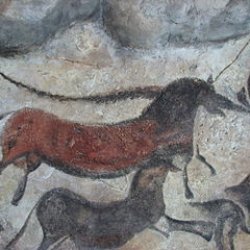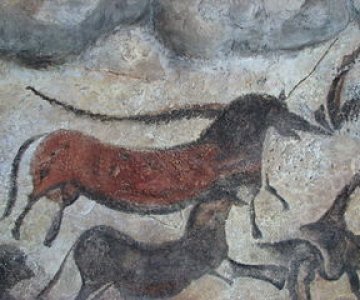Hola a todos

Ages of Humanity
Growing up is hard. You go through mood swings, growth spurts, phases of awkwardness. Frankly, it’s not always enjoyable, and not everyone grows up the same way. Some people peak early, others are late bloomers, some grow up with ease, others with difficulty. To help ourselves understand what it means to grow up, we categorize different phases of life. Adolescence. Teenagers. Adulthood. Retirement. Well, human societies aren’t much different. Many change in similar ways over time, and so it’s helpful for us to organize them into ages. Now, this isn’t a perfect metaphor because while humans have to change as an unavoidable part of nature, cultural and technological change are voluntary. There is no law of nature which says that people have to adopt new technologies, or even that they should. This being said, let’s look at some of the common changes across the world and see what humanity has looked like across the ages.
Stone Ages
Let’s start at the beginning, as humans first evolved roughly 2 million years ago. The vast majority of human history, about 99% of it, was spent in a timeframe we loosely call the Stone Age. Any guess where that name comes from? Yeah, from the fact that the most advanced technologies were stone tools, which actually take a lot of skill to make correctly. Now, the Stone Age can actually be divided into three smaller periods. The first is the Paleolithic, which means ‘Old Stone Age’. People across this time period lived in small bands of nomadic hunter-gatherers. The Paleolithic era began with the evolution of humans, but actually ended at different points around the world because its end is characterized by the development of new lifestyles, which was not a uniform process.
 |
The Paleolithic first began to wane near 13,000 BCE around the Mediterranean Sea, where warmer climates resulted in an abundance of natural foods growing around the region. We call this the Mesolithic, or ‘Middle Stone Age’. The Mesolithic ended when people realized that the reliable grains of the region could be domesticated and harvested year-round, meaning they didn’t have to move. The development of sedentary, or non-mobile societies characterizes the beginning of the Neolithic or, you guessed it, the ‘New Stone Age’. Around the Mediterranean, the Neolithic began around 8,000-6,000 BCE. Small settled tribes turned into permanent villages that practiced true agriculture, then larger towns, and finally major cities. The first Neolithic societies around the Mediterranean developed in the Middle East, the first in Asia were in China and India, and the first in the Americas were in the Valley of Mexico and the Andes Mountains.
Post-Stone Ages
As human societies made the shift from nomadic to sedentary, agricultural life, other changes occurred. For one, the ability to plant and harvest crops meant for the first time there could be a surplus of food, and not everyone needed to be involved in food production. Some people could be full-time artists, or healers, or politicians, or inventors. The next major age in human history occurred when some of these inventors realized that the soft copper they found could be refined into a much stronger metal. The Bronze Age was characterized by the rise of bronze tools, as well as cultural developments like systemized writing and math. This term is something of a misnomer, since advanced civilizations in the Americas (who had less access to the copper and tin needed to make bronze) rarely utilized the metal but still managed to create advanced systems of math, philosophy, and in the case of the Mayans, writing.
 |
Now, look around you. How many things do you see that are made of bronze? Probably not a lot, and that’s because human societies kept looking for better and stronger materials, leading around 1200-1000 BCE in the Mediterranean to the development of iron. The Iron Age is the third of hentai hentai anime porn hentai porn yaoi hentai hentai video hentai trap
hentai anal hentai tv watch hentai pregnant hentai gangbang hentai succubus hentai bondage hentai 3d hentai the traditional ages of human history, characterized by (of course) the use of iron, but also further technological and cultural expansion. Societies grew larger and more complex, substantial armies fought to expand the borders of growing empires, and writing grew from a system of record-keeping into an artistic tradition of true literature.
 |
hentai
anime porn
free hentai
hentai porn
watch hentai
futanari hentai
tentacle hentai
yuri hentai
yaoi hentai
furry hentai
anal hentai
hentai video
futabu hentai
hentai stream
mind control hentai
big boobs hentai
pregnant hentai
monster hentai
reverse rape hentai
femdom hentai
lesbian hentai


Hej, dette er en kommentar.
For at komme i gang med at moderere, redigere og slette kommentarer, skal du gå til kommentarskærmbilledet i kontrolpanelet.
Kommentaravatarer kommer fra Gravatar.